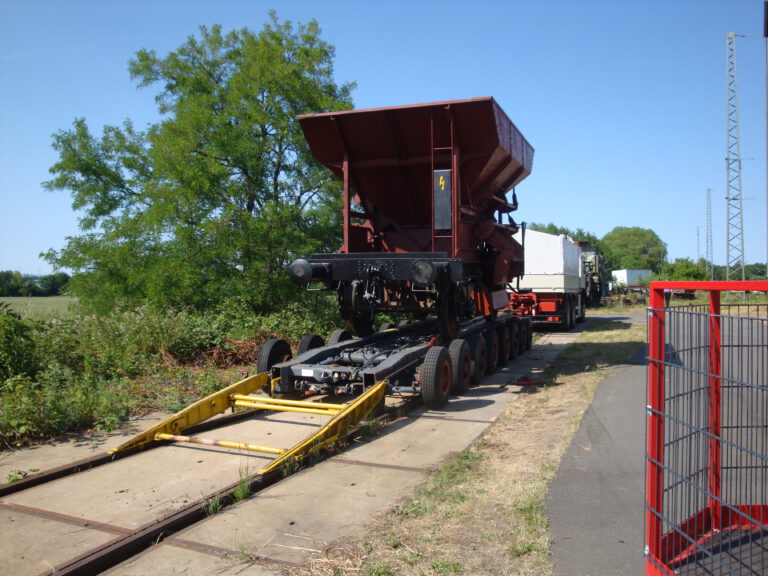
The heavy goods group in our museum deals with the history of combined heavy goods transport. The focus is on the transport of railway wagons and heavy loads on the road by means of so-called road rollers and special tractor units. The former were developed in the 1930s by Reichsbahn-Oberbaurat Ing. Johann Culemeyer as part of the “door-to-door” concept in response to the increasing competition of truck traffic with the railway and enabled freight wagons to be transported economically and easily by road. This meant that a freight wagon could be taken by road from a freight yard to a company without a direct siding, and costly and time-consuming reloading of the goods was no longer necessary. In addition to transporting railway wagons, the road roller was also used to transport other heavy loads such as machinery, transformers, boiler plants, locomotives and steel girders. As a result, the Deutsche Reichsbahn became the leading haulier of heavy loads as early as 1934.
The road vehicles were maintained in motor vehicle depots (Kbw) of the Deutsche Reichsbahn and Bundesbahn, which were attached to railway depots or freight stations. The Central Heavy Load Group DB Frankfurt / Kbw Darmstadt, later ZTL Mainz / Kbw Darmstadt had a decisive influence on the development of road and rail heavy load traffic at the Bundesbahn and was also quite extensively active in Culemeyer transport. Particularly noteworthy is the construction of the prefabricated concrete slab buildings in Darmstadt’s Neu-Kranichstein district: for this purpose, a receiving station was set up on the grounds of the Kranichstein depot – our current museum grounds – behind the roundhouse. The concrete slabs delivered by wagon were taken from there directly to the neighbouring construction site by road rollers in day and night operation.
After the disbandment of the Darmstadt heavy haulage group at the beginning of 2004, the Railway Museum was able to take over a total of four historic road rollers, three heavy haulage vehicles and two operable MAN tractor units. As part of special events such as the Bahnwelttage, Culemeyer transport is demonstrated by loading a freight wagon from the track onto the restored wagon roller “LR 40.9”.
Exhibits in the possession of Bahnwelt:
Heavy goods vehicles
Road rollers (“Culemeyer”)
Tractors
In addition to the transport of railway wagons by road rollers, the heavy-duty vehicle exhibition also illuminates the rail and road transport of transformers with the help of so-called carrying beal wagons and rail low loaders. Here, too, there were and still are constellations in which a transformer is driven by rail to the nearest possible reloading site and then brought to the transformer station or power plant by a special, self-propelled road vehicle. So far, this part of the collection includes one carrying beak wagon and one low-loader wagon. A corresponding road vehicle is still missing.
Exhibits in the possession of Bahnwelt:
© Bahnwelt 2024. All rights reserved.
For better reading, the masculine form is used for personal names and personal nouns on this website. Corresponding terms apply in principle to all genders for the purpose of equal treatment. The abbreviated form of language is for editorial reasons only and does not imply any valuation.
Sie erhalten in Kürze eine E-Mail an die von Ihnen angegebene E-Mail-Adresse. Bitte bestätigen Sie Ihre Newsletteranmeldung über den darin enthaltenen Link.